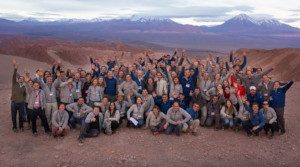The past 3-4 years have witnessed accelerating interest from investors with regard to Environmental Social and Governance (ESG) Funds. Morgan Stanley recently reported $1 in every $4 under professional management is now invested sustainably, with room for significant growth. So, in this ‘getting to know the industry’ segment, we were pleased to chat with Peter Kellner, the founder of Richmond Global. Peter has decades of interest and passion for companies that effect positive change, sustainability and social justice, partly thanks to living on 5 different continents and witnessing a variety of issues and opportunities. He has recently launched his own ESG fund, and with a Law degree from Yale, an MBA from Harvard, and an undergraduate degree from Princeton (where he lectured on entrepreneurship for 13 years), he has a fascinating background to learn more about investing into ESG.
Growing up what influenced your decision to get into Finance? What was your first job?
My family are Hungarian immigrants to the U.S. and my father, raised on scholarships and a great entrepreneur, was one of the first merger arbitrageurs, launching DLJ’s merger arbitrage desk and then founding his own firm. He is also a philanthropist, especially in education, and I learned from a young age the benefits of balancing ambition and giving back. My first job was working for a trader on the NYSE in my teenage years; but my real first foray into finance occurred in 1996. I was establishing my NGO Endeavor’s first office in Chile, and I invested in Internet Securities, the first company to put emerging market securities on the Web, which was bought for a large multiple of my investment by Euromoney four years later. From that point onward, I was hooked on technology and finance.
How did your interest in impact investing or ESG focused funds first materialize?
It first materialized after Princeton University on a Fulbright Scholarship to Hungary where I witnessed first-hand the dire pollution in the Former Soviet Union (FSU), and really, the developing world. I used my Fulbright to recruit Hungary’s top lawyers, scientists, economists, and journalists to build the Environmental Management & Law Association (EMLA), which I modeled on the US-based Natural Resources Defense Council (NRDC). EMLA was first backed in 1993 by the Rockefeller Brothers Fund and is today one of the most influential environmental NGOs in CEE. It is supported by the European Union, Norway, and other grant-making institutions. The original team is still running the organization.
It seems interest in ESG funds are being led from investors or employees via corporate pension funds, but only large investors seem to be able to invest into ESG funds at present. Is this fair to say?
It is fair to say that institutional investors are leading the way with their understanding that investing using material ESG metrics is proven to result in better investment decisions and also allows these investors to have influence over certain global policies. That said, family offices, offices of family offices, endowments, as well as groups that gather HNW families and the next generation globally to focus on sustainability, such as TheImpact.org and co-founded by my friend Justin Rockefeller, are making headway in creating ESG momentum. The challenge is that most investment efforts are private: philanthropic, venture capital, private equity, or private financing. While well-intended, these efforts amount annually to a drop in the bucket – less than $1 trillion – and will not ward off otherwise inevitable worldwide catastrophic events in the next decades. To me, our greatest hope lies in the penetration of the annual $180 trillion in turnover in the global public markets, when and if, public investment managers adopt ESG integration broadly – and ESG materiality specifically.
You have a Global Multi-Asset ESG focused fund, but it is complicated for investors to ascertain what an ESG fund really offers. Do you use the UN Sustainable Development Goals as a basis for your fundamental research?
 What an ESG fund offers is a more in-depth analysis of material, often but not exclusively non-financial, metrics that most other investors tend to overlook. Our ESG fund does not start our investment process using the UN SDGs, as most of those lack material metrics on which to base our analytics. We begin with a top down view of the world – looking at interest rates, especially the USFed, and rates across the big blocks (BOJ, ECB, Bank of China) – and from there drill down to nations, regions, sectors, and companies. At every level, from top down to bottom up, or idiosyncratic, we incorporate ESG analysis, whether through our proprietary machine learning platform, quantitatively, qualitatively, or in combination. Having said all this, we are signatories to the UN Principles for Responsible Investments and have fully integrated ESG into our fundamental analyses from the beginning. Our entire investment and risk team is FSA accredited at both levels under the SASB framework.
What an ESG fund offers is a more in-depth analysis of material, often but not exclusively non-financial, metrics that most other investors tend to overlook. Our ESG fund does not start our investment process using the UN SDGs, as most of those lack material metrics on which to base our analytics. We begin with a top down view of the world – looking at interest rates, especially the USFed, and rates across the big blocks (BOJ, ECB, Bank of China) – and from there drill down to nations, regions, sectors, and companies. At every level, from top down to bottom up, or idiosyncratic, we incorporate ESG analysis, whether through our proprietary machine learning platform, quantitatively, qualitatively, or in combination. Having said all this, we are signatories to the UN Principles for Responsible Investments and have fully integrated ESG into our fundamental analyses from the beginning. Our entire investment and risk team is FSA accredited at both levels under the SASB framework.
Is there any difference between an Impact Investing fund and an ESG fund? What kind of liquidity do you have?
It is important to establish the distinction between what we consider an ESG fund and an Impact Investing fund. They are both important tools that tackle different problems. Impact Investing funds are maximizing for impact and therefore are measuring for that. ESG funds are maximizing for profit by integrating ESG into deep fundamental analysis. In this sense, the goals of ESG investing are the same as any other investment fund: profits. The main difference is that we are pricing and internalizing externalities in our analysis. We do not short stocks and we only provide liquidity; we have no illiquid private side-pockets.
What are the developments you see happening that will benefit investors and should the market become more standardized?
By integrating ESG into traditional analysis, funds will deliver better risk adjusted returns, and investors are the main beneficiaries. The industry would greatly benefit from more standardized audited ESG metrics from companies (and their ESG consultants), by better ESG data (which our proprietary machine learning platform imputes and extrapolates), and by more agreement around the definitions and materiality of ESG metrics. More information on this final and critical point can be sourced here.


